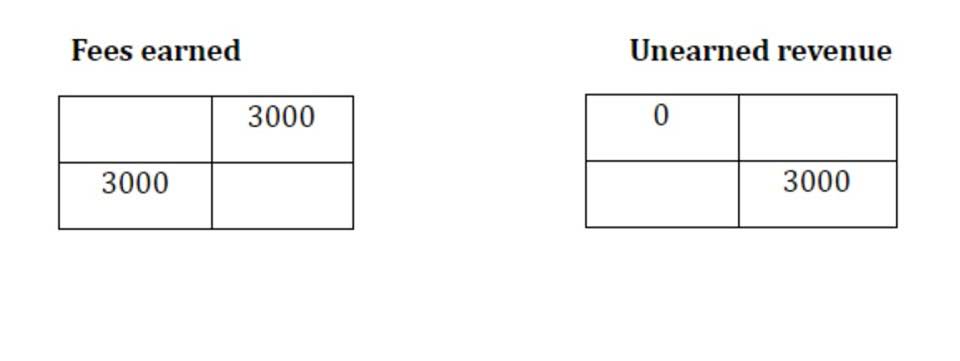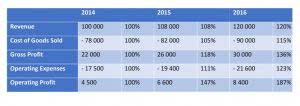
Accrual basis accounting records those invoices and bills even if the funds haven’t been exchanged. Generally, accrual basis is the recommended accounting method and more aligned with generally accepted accounting principles. This method bookkeeping solutions doesn’t record invoices or your company’s outstanding bills until they’ve been paid. Before you take on any small-business bookkeeping tasks, you must decide whether a single- or double-entry accounting system is a better fit.
How to Keep the Most Accurate Financial Data
- Bookkeeping tasks provide the records necessary to understand a business’s finances as well as recognize any monetary issues that may need to be addressed.
- It can also be useful as a backup system for digital accounting systems.However, manual bookkeeping can be time-consuming and prone to human error.
- QuickBooks updates the software when new versions are released and stores the company’s accounting data in the cloud.
- It should also help them identify weaknesses in their processes and precipitate improvements.
- With this calculator, you’ll be able to figure out how many products you must sell to break even.
These business activities are recorded based on the company’s accounting principles and supporting documentation. Single-entry bookkeeping is straightforward, understandable, and primarily used by small businesses that don’t have complex transactions. It is more of a cash flow system, tracking what comes in and what goes out. It does not consider assets, liabilities, or any other financial indicators that the double-entry system does.
Manual Versus Computerized Systems
There are several types of business bank accounts, each with its own purpose and benefits. Inventory is the stock of goods a business has on hand or in transit, waiting to be sold. The value of inventory can significantly impact a company’s financial statements, so accurate tracking and management is vital. Your accounting ledger serves as the hub for all your financial information—in particular, all your accounts and transactions.

Scale Your Business
The primary document used in this system is a simple cash book or check register. Also known as real or balance sheet accounts, these are general ledger entries that do not close at the end of an accounting period but are instead carried forward to subsequent periods . Real accounts, also known as permanent accounts, are quite different compared to their temporary equivalents. They persist from one accounting period to the next and maintain their balances over time unlike temporary accounts which are closed at the end of the period. These permanent files include assets, liabilities and equity sections making them very useful in showing the company’s financial position that lasts long.

- The two main types of bookkeeping systems are single-entry and double-entry.
- Considering the time you save by using accounting software, accounting software basically pays for itself.
- Other pages to add include an “About Us” page, product or service pages, frequently asked questions (FAQs), a blog and contact information.
- Financial statements are the next piece of the accounting and bookkeeping puzzle.
- One way in which a retail organization may obtain, input, process, and store data related to a sales transaction is through a point-of-sale system (POS).
The accrual accounting method records financial transactions when they occur rather than when cash exchanges hands. The main use of accounting systems is to track income, expenses, sales, inventory, taxes, payroll, and compile financial reports. Accrual accounting records the dollar amounts when a transaction (a bill going out or an invoice coming in) occurs, not when the cash is actually exchanged.
How do I get a loan for a new business?
- It’s worth noting that certain software packages come with only core accounting functions, whereas others are geared toward wider project management tasks.
- Online accounting software is a system that helps automate parts of the accounting cycle, such as recording journal entries.
- Because bookkeeping involves the creation of financial reports, you will have access to information that provides accurate indicators of measurable success.
- An example of an expense account is Salaries and Wages or Selling and Administrative expenses.
- As a small business owner, it’s essential that you familiarize yourself with the particularities of each accounting system before opting for one.
The software lets a business create custom accounts, like a “technology expense” account to record purchases of computers, printers, cell phones, etc. You can also connect your business https://www.bookstime.com/articles/nonprofit-accounting-definition-and-explanation bank account to make recording transactions easier. With cloud-based accounting software all the financial data including entries, financial statements, and reports are online.
What Are the Different Accounting Methods?
You can hire actual individuals to do the job for you or purchase software to assist you in your quest to complete these jobs on your own. If something listed above is way out of your comfort zone or you don’t have the time to do these accounting tasks well, ask for help. You should focus on the tasks you do best and outsource the jobs you really can’t do or don’t want to do. A sound inventory management system will help keep track of inventory from production through the sale.
Understanding Accounting Errors, How to Detect and Prevent Them – Investopedia
Understanding Accounting Errors, How to Detect and Prevent Them.
Posted: Sat, 25 Mar 2017 23:32:52 GMT [source]
- One way businesses can easily meet hardware and software compatibility requirements is by purchasing a turnkey system that includes both the hardware and the software that the business needs.
- Taxes can be complex, and there are several different types of taxes you may be liable for, including income tax, self-employment tax, sales tax and property tax.
- This way, whenever you receive a payment or make a business expense, a journal entry is automatically generated.
- The entry system you choose impacts how you manage your finances and how your bookkeeping processes will work.
- An advantage of cloud computing is that company employees can access the software and enter transactions from any device with an internet connection at any location.





